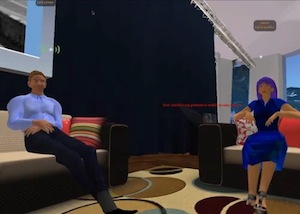 Virtual world Second Life has a vibrant arts community to say the least. Part of that community is the Avatar Repertory Theatre (ART). They have a few shows under their belt now, including Shakespeare’s The Tempest.
Virtual world Second Life has a vibrant arts community to say the least. Part of that community is the Avatar Repertory Theatre (ART). They have a few shows under their belt now, including Shakespeare’s The Tempest.
Their latest is Oedipus Rex (Oedipus The King) by Sophocles. During October there’ll be six performances, with tickets costing L$500 (around US$1.50). That’s a pretty reasonable price for the whole theatrical shebang including music.
Here’s a short promo to give you a taste:
More information on the show over at the ART blog, or you can check out the theatre space itself in Second Life. If you haven’t checked out Second Life before, here’s a good excuse to do so.
via [Metaverse Journal]





 1. VentureBeat (USA) –
1. VentureBeat (USA) – 
Recent Comments